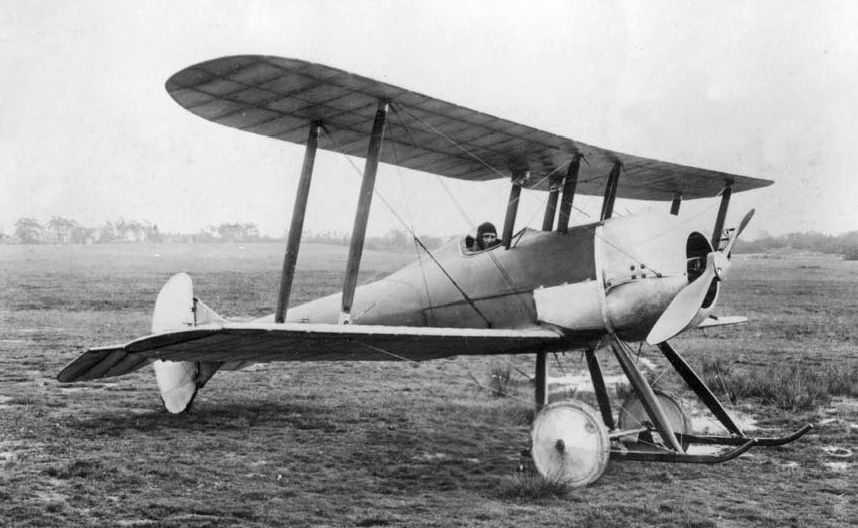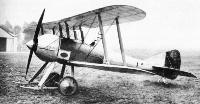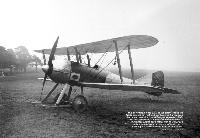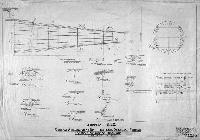
Описание
Страна : Великобритания
Год : 1913
Единственный экземпляр
Варианты
- RAF - B.S.1 - 1913 - Великобритания
- RAF - S.E.2 - 1913 - Великобритания
Royal Aircraft Factory. Многоцелевые самолеты
<...>
B.S.1 разбился в марте 1913 года, потом его отремонтировали и доработали в B.S.2 (позже обозначение поменяли на S.E.2 - Scout Experimental). Первый полет на B.S.2 выполнил Джеффри де Хэвилленд в октябре 1913 года; встречается также его неофициальное обозначение - S.E.2a.
В первые месяцы войны самолет испытывали во Франции представители Королевского авиакорпуса (RFC), он получил импровизированное вооружение в виде винтовки. B.S.2 был поврежден в марте 1915 года.
- Описание
Фотографии
-
Aviation Historian 3 / P.Jarrett - Pioneering the Fighter (1)
Picture depicts the S.E.2 after repair during the summer of 1913, following its accident on the afternoon of March 27 that year. It was back in the air by October, when its performance with the 80 h.p. seven-cylinder Gnome Lambda engine was evaluated.
The S.E.2a was originally fitted with a 100 h.p. two-row Gnome but was subsequently re-engined with an 80 h.p. unit.
The S.E.2 was an exceptionally aerodynamically clean aeroplane for 1913, the aim being to achieve maximum speed for an unarmed reconnaissance “Scout” machine while retaining a reasonable landing speed. The lack of a windscreen did nothing to enhance pilot comfort - hence the unconventional knitted balaclava headgear. -
Aviation Historian 3 / P.Jarrett - Pioneering the Fighter (1)
The B.S.1/S.E.2 on Farnborough Common on October 11, 1913. The larger rudder and dorsal and ventral fins fitted after Geoffrey de Havilland’s accident are evident.
-
Aviation Historian 3 / P.Jarrett - Pioneering the Fighter (1)
A port side view of the S.E.2. Note the access panel for the engine auxiliaries immediately behind the cowling. There was no tailskid as such, the lower end of the rudder being shod with steel to serve that purpose. Although not unusual at the time, it was not a good idea, as it imposed undue stresses on the rudder and its hinges.
-
Мировая Авиация 226
S.E.2 передали Королевскому авиационному корпусу в феврале 1913 года. Самолет получил бортовой номер 609, он летал сначала в 5-й, а затем в 3-й эскадрильях.
-
Aviation Historian 3 / P.Jarrett - Pioneering the Fighter (1)
This photograph of the S.E.2 as 609 clearly shows the fabric-covered conventional rear fuselage that replaced the monocoque structure. Although a separate tailskid has now been fitted, it is attached to an extension of the rudder leading edge, rather than to the tail end of the fuselage frame, so there is still a danger of straining the rudder structure and its attachment.
-
Aviation Historian 3 / P.Jarrett - Pioneering the Fighter (1)
The rebuilt S.E.2 with its further revised tail surfaces. Its military serial number, 609, is chalked or painted in small numerals at the top of the rudder. The spinner on the hub of the finer-pitch propeller is of increased diameter, but space has been left to admit cooling air for the engine.
-
Aviation Historian 3 / P.Jarrett - Pioneering the Fighter (1)
The S.E.2 in service with No 3 Sqn RFC at Cliogues. Note the roundel on its rudder and the holster for a revolver attached outside the cockpit.
-
Aviation Historian 3 / P.Jarrett - Pioneering the Fighter (1)
A Royal Aircraft Factory drawing for the fairing of the S.E.2’s rear fuselage. By this second stage of modification, in the spring of 1914, O’Gorman had decided that a conventional braced box-girder structure faired with formers and stringers was just as effective as a monocoque structure, but cheaper and quicker to build.
-
Aeroplane Monthly 1976-07 / J.Bruce - Ancestors of the S.E.5
B.E.3; B.S.1; S.E.2 (1914 reconstruction)
Другие самолёты на фотографии: RAF B.S.1 - Великобритания - 1913
- Фотографии








